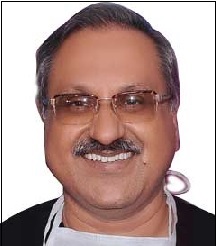Dermal fillers
Dermal Fillers are used to minimize the appearance of facial wrinkles and lines and make your face look youthful. Through the process of dermal fillers, the surgeon helps to balance out the lost proteins from the skin as a result of ageing and other external factors. As a result, dermal fillers naturally make the face youthful and sometimes, voluminous too.
WHAT CAN BE CORRECTED WITH DERMAL FILLERS?
Dermal fillers are generally used to mask the signs of ageing. You can use dermal fillers to correct various issues on the face like:
- Soften the frown lines, worry lines on the forehead, crow’s feet, smile lines and other fine lines on the face.
- Plump the lips.
- Enhance the hollow contours of the cheeks and add some volume.
- Improve the appearance of pitted acne scars and wounds.
- Decrease the shallowness below the eyes.
- Augment the cheeks.
Dermal Fillers are temporary solutions to address facial issues and can also prolong the need for a complete facelift. It can last for about six months to 18 months. Please note that dermal fillers cannot be replaced for the brow lift, facelift or any other facial cosmetic surgeries.
WHAT ARE THE TYPES OF DERMAL FILLERS?
There are several types of dermal fillers available from which you can pick one according to your facial issue:
Calcium Hydroxylapatite
Find a Plastic Surgeon in Your Area
Find Top Surgeons in India by Procedure
Find the Cost of a Procedure
This is a mineral-kind of material found naturally in the human bones. For dermal fillers, the surgeon will use a biosynthetically-created Calcium Hydroxylapatite and so, there won’t be any issues of skin allergies.
Calcium Hydroxylapatite is majorly used to treat moderately-to-severe fine lines and wrinkles and increase the volume of the cheekbones.
Hyaluronic Acid
The surgeon injects hyaluronic acid to improve the appearance of acne scars, deep lines, frown lines, facial scars, worry lines, cheek depressions and various other fine lines across the face.
Polylactic Acid
The body produces collagen to make your face look plump and youthful. As you age, the collagen production of your skin diminishes, which leads to the occurrence of fine lines.
Polylactic acid is a synthetic stimulator that’s injected into specific locations of the face to cause the body to produce more collagen. Since it takes time to stimulate the production of collagen, it may take up to six weeks to see the results.
Polyalkylimide
Polyalkylimide is biocompatible, which means it doesn’t reach much with the human tissues. It’s a semi-permanent dermal filler unlike most others and is used to treat deep wrinkles, improve the hollow cheeks and plump the lips.
Fat Dermal Fillers
In the other types of dermal fillers, the surgeon generally uses the synthetically created compounds to inject into the face. However, in fat dermal fillers, the surgeon uses the natural fat from the body.
You can either use fat from your own body or take the help of a donor. The fat is extracted through the process of liposuction and injected into several areas of the face. Since it isn’t created in laboratory conditions, it can be unpredictable.
Apart from these common types, there are a few other types of dermal fillers like Silicone, expanded Polytetrafluoroethylene (ePTFE), Polyethylene, Polymethyl-Methacrylate (PMMA) and Hydrophilic Polyacrylamide.
WHAT HAPPENS DURING CONSULTATION?
During the initial phase of the consultation process, the plastic surgeon will sit down with you and talk about your expectations. You can convey the changes you want and even support it with any pictures you have.
The surgeon will then discuss the options and the realistic way of achieving your desired results. The surgeon will also ask about your allergies to choose the right dermal filler based on your expectations and medical conditions. Be open with the surgeon and get all the details about the recovery process and any other preventive measures you may need to take after the injections.
WHAT’S THE PROCESS OF INJECTING DERMAL FILLERS?
On the day of the treatment, the surgeon will inject your choice of fillers under a controlled environment. The total process may be as quick as 15 minutes or prolong for up to 1 hour, depending on the areas of concern.
Anesthesia
Before the procedure begins, the surgeon will clean the area with an antibacterial agent and administer local anesthesia or apply a numbing ointment.
Injecting the Filler
After the effect of anesthesia sets in, the surgeon will inject the chosen dermal fillers into the appropriate areas. It’s the skill of the surgeon to select the injecting sites to ensure that the final result looks exactly as you wanted and is entirely natural.
WHAT’S THE RECOVERY PROCESS?
Dermal fillers have a very minimal recovery process.
Soon after the injection, you may feel slight numbness do the effect of anesthesia. There will be minor swelling in the injected areas and you may experience tenderness. You can use ice packs to ease the discomfort and soon, the swelling will reduce in a couple of days.
You can resume your regular work in a day or two. But make sure not to move your facial muscles so much. Else, it could move the fillers around before it begins setting and can produce different results than you expected. It’s best to avoid sun exposure at least for a few days until the fillers set in.
If you feel any extra pain or sensitivity in your face weeks after injecting dermal fillers, contact your cosmetic surgeon immediately.
our surgeons:




















